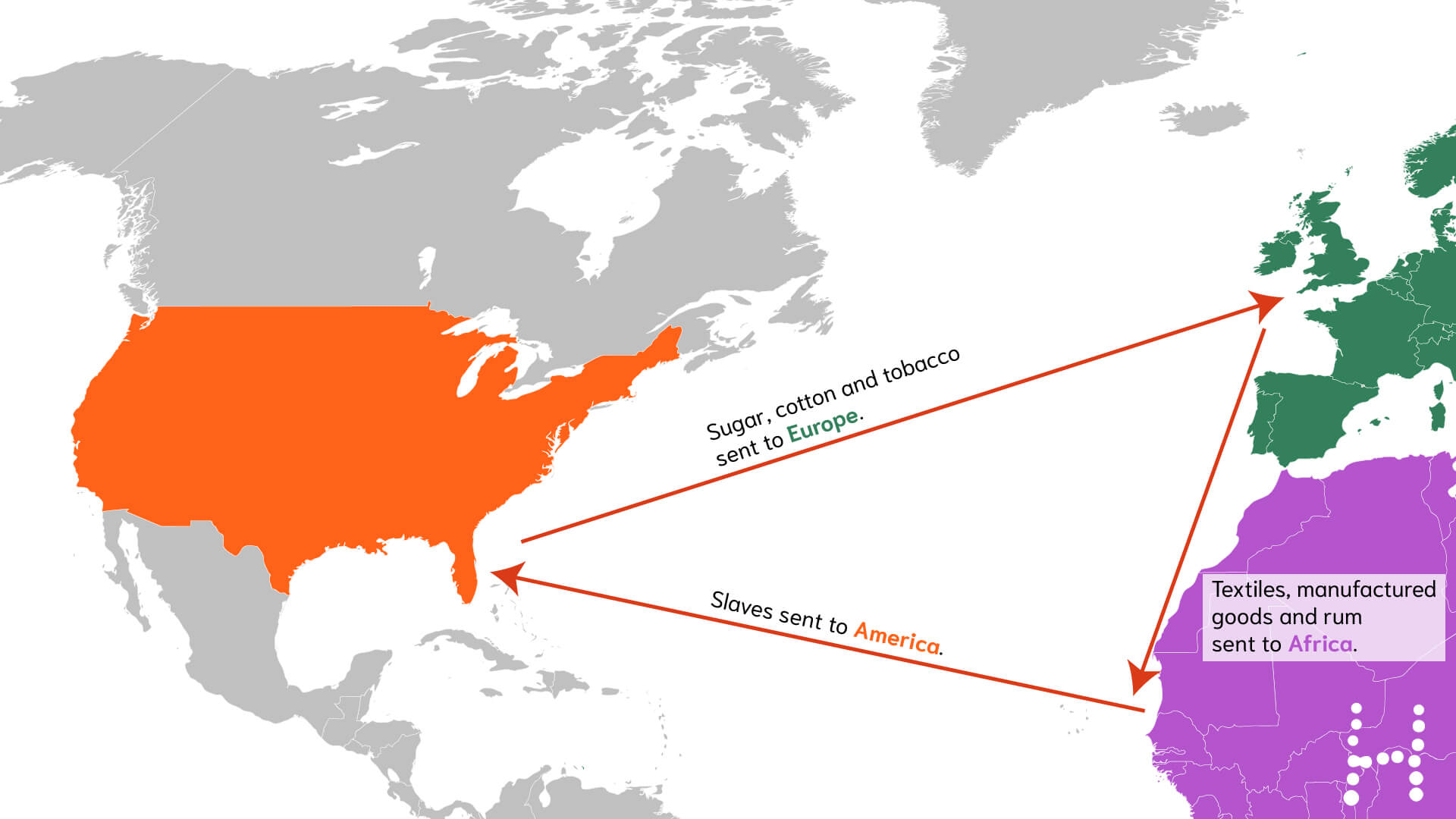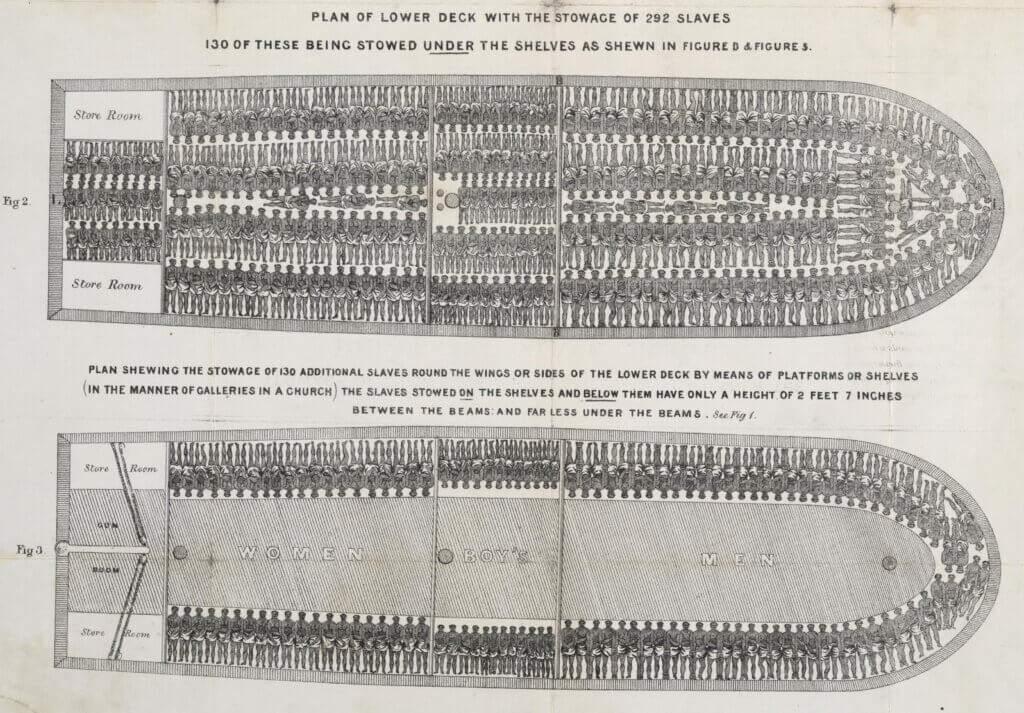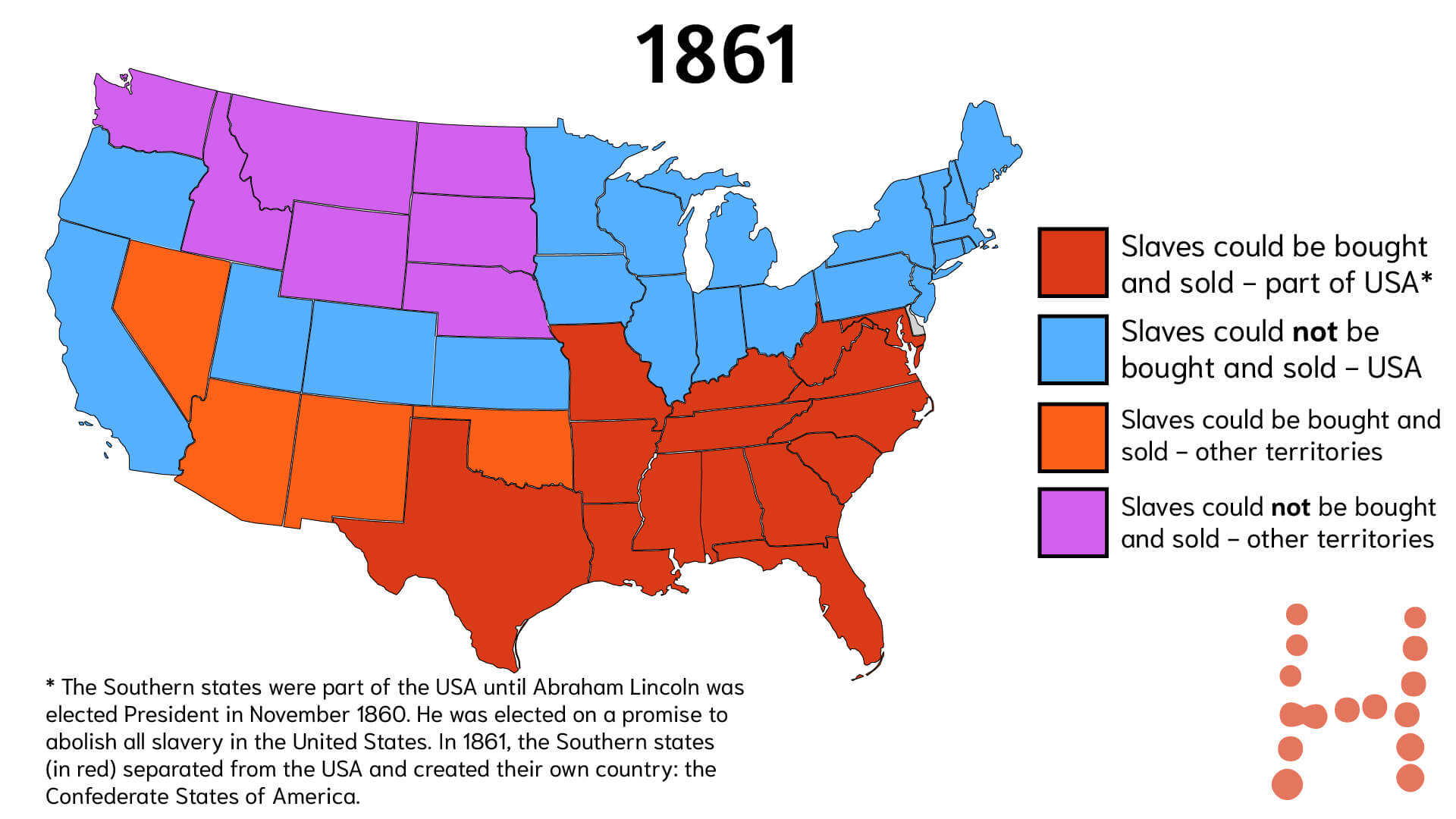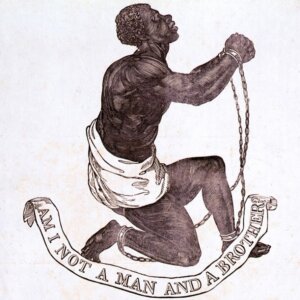The trans-Atlantic slave trade lasted from the beginning of the 16th century before it was partially, and eventually fully, abolished in the mid-19th century after the American Civil War.
The first people to participate in this slave trade was the Portuguese in the 16th century. Other countries, such as Britain, France and the Netherlands, quickly followed.
The triangular slave trade
The slave trade operated in a “triangle” (see below): ships would leave Europe to go to Africa, where textiles, rum and guns would be exchanged for African slaves. Then the ships would go to the “new colonies” (which included what is now Cuba and the some states in the USA.)
In these “new colonies”, they would exchange the African slaves for valuable materials like cotton, sugar, tobacco and coffee, which would be sent to Europe. And the cycle would then be repeated. It was an extremely profitable trade.

Europe to Africa
The first section of the route was from Europe to Africa. There were ships coming from the UK, France, Spain, Portugal and the Netherlands. Ships would be loaded with guns, bullets and other items made in factories. African leaders had taken part in the slave trade since the 15th century.
Africa to America
The second section of the route was from Africa to America. There, African slaves would be loaded onto large ships, lying in cramped conditions so that as many of them can fit onto the ship as possible. Many died on the trip from Africa to America of various diseases.

America to Europe
The slaves that survived the journey would be sold in America and the Caribbean Islands. These slaves would usually be sold to those who owned cotton, tobacco and sugar plantations. Cotton, tobacco, sugar and other valuable materials would then be loaded onto these ships to be sent to Europe.
Banning slavery
British Empire
Britain banned slavery across it’s empire in 1807. Before slavery was banned, the slave trade had sent 12 million Africans over to the USA.
United States of America
Below is a diagram showing what US states had banned slavery by 1861. Those who hadn’t abolished slavery were in dark red (orange for other territories) and those who had abolished slavery in light blue (purple for other territories.)

Slavery was banned in the northern US states in 1861. The Southern states, who made most of their money through the slave trade, didn’t like this. Seven of the Southern states – South Carolina, Mississippi, Florida, Alabama, Georgia, Louisiana and Texas – separated from the United States and created a new country: the Confederate States of America. In April 1861, after the American Civil War began, Virginia, North Carolina, Arkansas and Tennessee also joined the country.
After the civil war had ended, these Southern states banned slavery when they became part of the USA once again in 1865.
Campaigns for ending slavery
American Colonization Society
In both the British Empire and the USA, there were campaigns for banning slavery. One of the main campaigns that tried to end slavery was the American Colonization Society, which was set up in 1816. They said that the slaves should be freed and sent back to Africa. By 1860, 12,000 slaves had returned to Africa. The Society saw this as a compromise between abolishing slavery entirely and not changing the slave system at all.
The British Anti-Slavery Society

The British Anti-Slavery society was founded in 1823. It’s aim? To abolish slavery throughout the British Empire. One of the tasks they did to do this was helping Mary Prince, a woman who had escaped from slavery, to publish her experience of slavery. The book, The History of Mary Prince, A West Indian Slave, was very successful, having to be reprinted three times in order to meet demand.
As well as that, they also wrote a law, known as an Act, to be passed through the British Parliament that would ban slavery throughout the Empire. The Slave Abolition Act was passed in 1833, but it took several years to come into effect throughout the Empire.